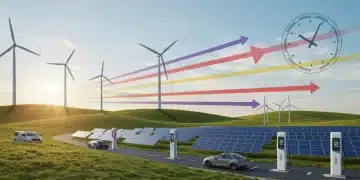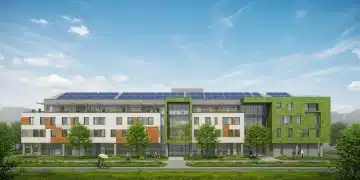US Solar Capacity to Grow 20% by 2025: Renewable Energy Momentum Surges
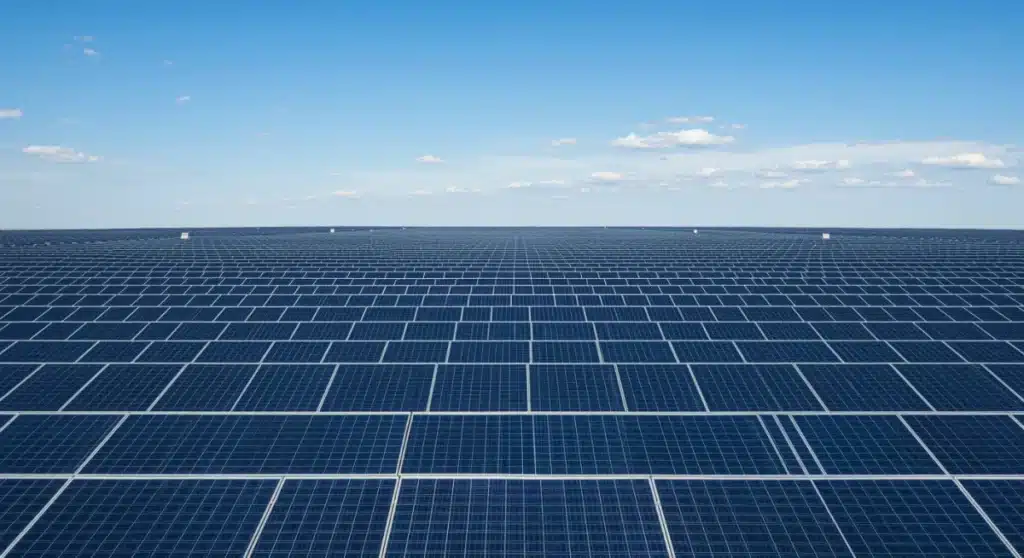
The United States solar capacity is projected to expand by 20% in 2025, marking a significant acceleration in the nation’s renewable energy transition and emphasizing increasing investment and technological adoption.
The US Solar Capacity Growth is accelerating, with projections indicating a substantial 20% increase in solar capacity by 2025. This surge underscores a critical shift in the nation’s energy landscape, driven by evolving policies, technological advancements, and a growing commitment to sustainable power. This article delves into the forces behind this momentum, its implications for the economy and environment, and what this means for the future of energy in the United States.
The Unprecedented Rise in US Solar Capacity
The United States is on the cusp of a significant transformation in its energy matrix, with solar power leading the charge. Recent analyses and projections from industry experts and government agencies point to a remarkable 20% growth in solar capacity over the next two years, specifically by 2025. This isn’t merely an incremental change; it represents a fundamental acceleration in the adoption of renewable energy sources across the nation.
This projected growth is fueled by a confluence of factors, including supportive federal and state policies, decreasing costs of solar technology, and increasing corporate and consumer demand for clean energy. The momentum is palpable, indicating a robust and expanding market that is reshaping how electricity is generated and consumed. The scale of this expansion highlights an ongoing commitment to decarbonize the grid and achieve ambitious climate goals.
Key Drivers of Solar Expansion
- Policy Incentives: Federal initiatives, such as the Inflation Reduction Act (IRA), provide substantial tax credits and incentives for solar deployment, making projects more financially viable for developers and homeowners alike.
- Cost Reduction: The manufacturing costs of solar panels and associated technologies have continued to decline, making solar power increasingly competitive with traditional fossil fuels.
- Technological Advancements: Innovations in panel efficiency, energy storage solutions, and grid integration technologies are enhancing the reliability and performance of solar installations.
The implications of such rapid growth extend beyond mere megawatts; they touch upon job creation, energy independence, and environmental stewardship. This section sets the stage for a deeper exploration of how this US Solar Capacity Growth is unfolding and what challenges and opportunities lie ahead.
Policy Frameworks and Economic Catalysts
The impressive trajectory of US solar capacity growth is inextricably linked to a supportive policy environment and compelling economic catalysts. Federal legislation, particularly the Inflation Reduction Act (IRA) enacted in 2022, has been a game-changer, providing unprecedented long-term certainty for renewable energy investments. This act extends and expands tax credits for solar projects, domestically manufactured components, and energy storage, significantly de-risking investments and encouraging rapid deployment.
Beyond federal support, many states have implemented their own renewable portfolio standards (RPS) and clean energy mandates, requiring utilities to source a certain percentage of their electricity from renewables. These state-level policies create a stable demand for solar power, further driving market expansion. Such a robust policy landscape provides a fertile ground for the industry to flourish, attracting both domestic and international investors.
The Inflation Reduction Act’s Impact
- Investment Tax Credits (ITC): The IRA provides a 30% ITC for solar projects, including residential and commercial installations, which can be further boosted by meeting domestic content and prevailing wage requirements.
- Production Tax Credits (PTC): For utility-scale projects, the PTC offers an alternative incentive based on electricity produced, ensuring long-term financial viability for large-scale developments.
- Manufacturing Incentives: The act includes credits for manufacturing solar components in the U.S., aiming to bolster domestic supply chains and create American jobs.
Economically, the declining levelized cost of electricity (LCOE) for solar PV has made it one of the cheapest forms of new electricity generation. This cost advantage, combined with policy support, makes solar an irresistible option for utilities, businesses, and homeowners seeking to reduce energy expenses and contribute to a cleaner environment. The economic incentives are clear, making the US Solar Capacity Growth not just an environmental imperative but a sound financial decision.
Technological Innovations Driving Efficiency and Adoption
The rapid expansion of solar power in the United States is not solely a product of policy and economics; it is also profoundly influenced by continuous technological innovation. Advances in photovoltaic (PV) cell efficiency, materials science, and manufacturing processes have dramatically improved the performance and reduced the cost of solar panels. Modern solar panels can convert a higher percentage of sunlight into electricity, meaning more power can be generated from smaller footprints.
Beyond the panels themselves, innovations in energy storage, particularly battery technology, are addressing one of solar’s primary challenges: intermittency. Improved battery storage solutions allow for solar energy to be captured during peak generation times and dispatched when needed, even after sunset or on cloudy days. This integration of storage makes solar power a more reliable and dispatchable energy source, crucial for grid stability.
Furthermore, advancements in smart grid technologies, artificial intelligence (AI) for predictive maintenance, and sophisticated inverter systems are optimizing solar plant operations and enhancing grid integration. These innovations are making solar easier to install, more efficient to operate, and more seamlessly integrated into the existing electricity infrastructure, paving the way for even greater US Solar Capacity Growth.
Evolution of Solar Technology
- Higher Efficiency Panels: Research and development continue to push the boundaries of PV efficiency, with new materials like perovskites showing promise for even greater electricity output.
- Advanced Inverters: Smart inverters provide grid support functions, such as voltage regulation and reactive power control, which are vital for integrating large amounts of renewable energy without destabilizing the grid.
- Integrated Storage Solutions: The falling cost of lithium-ion batteries and the development of alternative storage technologies are enabling more effective energy management and grid resilience.
These technological leaps are not just theoretical; they are being implemented in projects across the country, from residential rooftops to utility-scale solar farms. The synergy between scientific discovery and practical application is creating a virtuous cycle, driving down costs and increasing the appeal of solar energy solutions. This ongoing innovation is a cornerstone of the projected US Solar Capacity Growth.
Environmental and Economic Impacts of Solar Expansion
The projected 20% growth in US solar capacity by 2025 carries profound environmental and economic implications. Environmentally, the expansion of solar power is a critical step in combating climate change. By displacing electricity generated from fossil fuels, solar energy significantly reduces greenhouse gas emissions, particularly carbon dioxide. This contributes directly to cleaner air and water, mitigating the health impacts associated with traditional power generation and advancing national climate goals.
Economically, the solar industry is a powerful engine for job creation. From manufacturing and installation to operations and maintenance, the sector supports a diverse range of skilled labor. This growth stimulates local economies, particularly in rural areas where large-scale solar projects are often sited. Furthermore, increased reliance on domestic solar power enhances energy independence, reducing vulnerability to volatile global energy markets and strengthening national security.
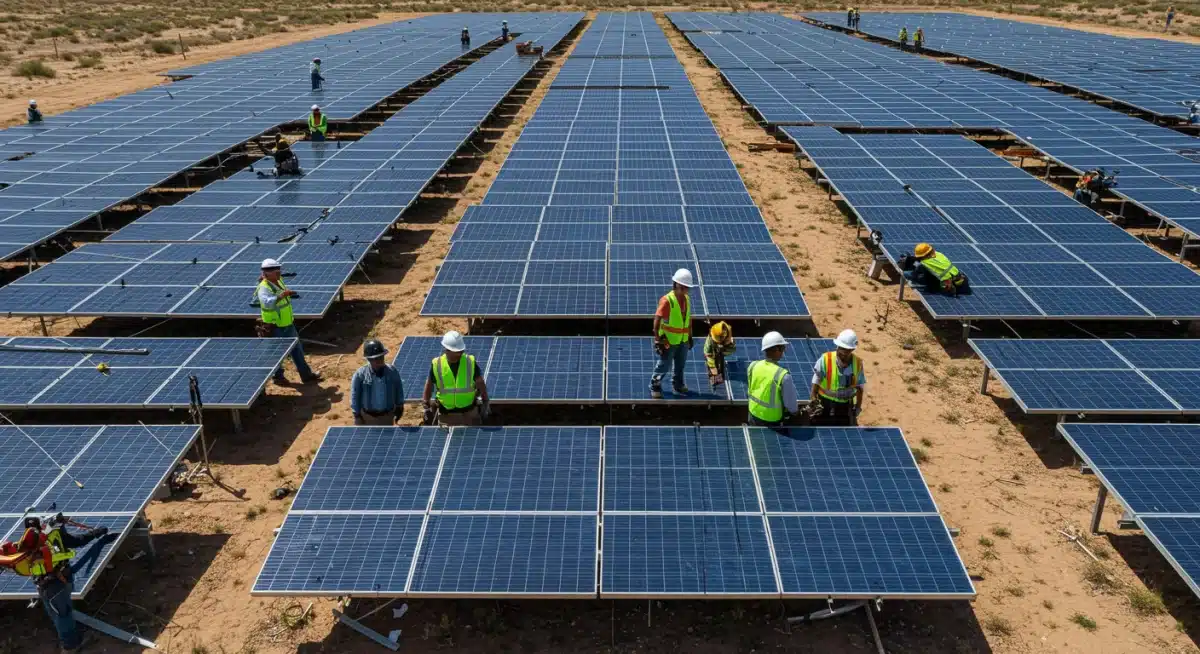
The economic benefits also extend to consumers, who can lock in lower, more predictable electricity rates by adopting solar, either through rooftop installations or community solar programs. This stability helps protect households and businesses from fluctuating energy prices. The overall investment in solar infrastructure also attracts further capital, fostering innovation and economic development in related sectors. The dual benefits underscore why US Solar Capacity Growth is a strategic imperative.
Tangible Benefits for Communities
- Job Growth: The solar industry is one of the fastest-growing job sectors in the U.S., creating high-paying jobs in manufacturing, installation, and engineering.
- Reduced Energy Costs: Solar power offers long-term savings for consumers and businesses, contributing to economic stability and competitiveness.
- Improved Air Quality: Less reliance on fossil fuels means fewer pollutants released into the atmosphere, leading to better public health outcomes.
The transition to solar energy is not without its challenges, such as land use considerations and grid modernization requirements, but the overwhelming consensus points to a net positive impact. The environmental and economic advantages collectively make a compelling case for continued investment and policy support, ensuring the sustained momentum of US Solar Capacity Growth.
Challenges and Opportunities in Solar Deployment
Despite the optimistic projections for US Solar Capacity Growth, the path to a fully solar-powered future is not without its hurdles. One significant challenge lies in grid modernization. Integrating a massive influx of intermittent renewable energy requires substantial upgrades to the existing electricity transmission and distribution infrastructure. This includes investing in smart grid technologies, enhancing grid flexibility, and developing advanced energy management systems to balance supply and demand effectively.
Permitting and interconnection processes also present bottlenecks. Navigating complex regulatory frameworks at federal, state, and local levels can be time-consuming and costly, delaying project development. Streamlining these processes is crucial for maintaining the pace of deployment. Additionally, securing sufficient land for large-scale solar farms can lead to land-use conflicts, necessitating careful planning and community engagement.
Overcoming Deployment Obstacles
- Grid Upgrades: Investing in transmission lines, substation modernizations, and advanced grid controls is essential to accommodate increased solar generation reliably.
- Permitting Reform: Simplifying and standardizing permitting processes at all government levels can significantly accelerate project timelines.
- Workforce Development: Expanding training programs and educational opportunities is vital to meet the growing demand for skilled labor in the solar industry.
However, these challenges also present significant opportunities. The need for grid modernization, for instance, drives innovation in energy storage and smart grid solutions, creating new markets and jobs. The push for domestic manufacturing incentivized by policies like the IRA fosters a robust American supply chain, reducing reliance on foreign components and bolstering economic resilience. Addressing these challenges head-on will solidify the foundation for sustained US Solar Capacity Growth and ensure a smoother energy transition.
The Future Outlook for US Solar Energy
Looking ahead, the future of solar energy in the United States appears brighter than ever, with the projected 20% growth by 2025 serving as a powerful indicator of what’s to come. This momentum is expected to continue well beyond mid-decade, driven by ongoing policy support, relentless technological innovation, and an increasingly favorable economic landscape. The long-term vision involves a significantly decarbonized grid, where solar plays a central, dominant role alongside other renewables.
The integration of solar with advanced energy storage systems will become even more sophisticated, allowing for greater grid stability and reliability. We can anticipate further breakthroughs in materials science, potentially leading to even more efficient and cost-effective solar technologies. Innovations in distributed generation, such as community solar and microgrids, will also empower more communities and individuals to participate directly in the clean energy transition.
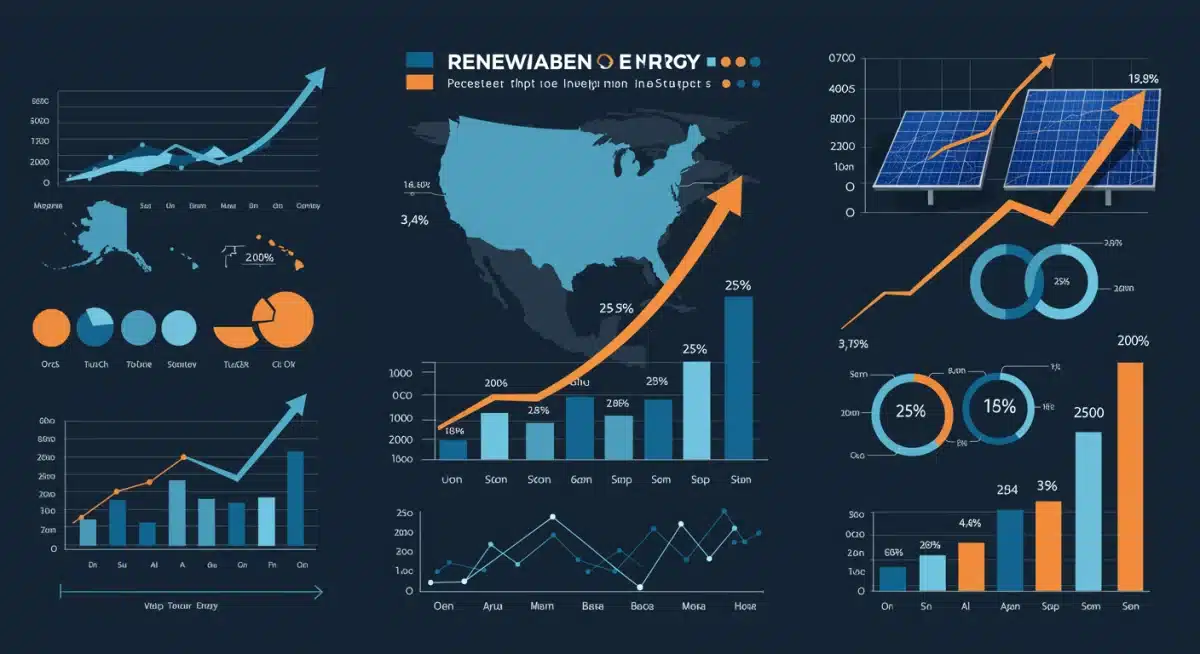
The commitment to domestic manufacturing, spurred by recent legislation, will likely lead to a more resilient and secure solar supply chain within the U.S., creating more jobs and fostering economic growth. This strategic focus on self-sufficiency will reduce vulnerabilities to global market fluctuations and geopolitical tensions. The sustained US Solar Capacity Growth is not just about producing electricity; it’s about building a more sustainable, resilient, and prosperous future for the nation.
Key Trends Shaping the Future
- Hybrid Systems: The combination of solar PV with battery storage will become the standard for new installations, offering enhanced reliability and grid services.
- Green Hydrogen: Solar energy will increasingly power the production of green hydrogen, opening new avenues for decarbonizing heavy industries and transportation.
- Circular Economy Principles: Greater emphasis will be placed on recycling solar panels and components, fostering a more sustainable lifecycle for solar technology.
The convergence of these trends suggests that solar energy will not only meet a larger share of the nation’s electricity demand but also drive innovation across various sectors. The continued expansion of solar capacity represents a fundamental pillar in the broader strategy to achieve a clean energy economy, securing long-term environmental and economic benefits for the United States.
Key Aspect |
Brief Description > |
|---|---|
Projected Growth |
US solar capacity anticipated to increase by 20% by 2025. |
Driving Factors |
Policy incentives, declining costs, and technological advancements. |
Impacts |
Reduced emissions, job creation, and enhanced energy independence. |
Challenges |
Grid modernization, permitting, and land-use considerations. |
Frequently Asked Questions About US Solar Growth
The growth is primarily driven by supportive government policies like the Inflation Reduction Act, significant reductions in solar technology costs, and continuous technological innovations that enhance efficiency and reliability.
The IRA provides substantial investment and production tax credits for solar projects, along with incentives for domestic manufacturing, making solar installations more financially attractive and boosting local supply chains.
Key economic benefits include significant job creation across various sectors, lower and more stable electricity costs for consumers, and enhanced national energy independence by reducing reliance on volatile global energy markets.
Challenges include the need for extensive grid modernization to integrate intermittent renewables, streamlining complex permitting processes, and effectively resolving potential land-use conflicts for large-scale installations.
Technological advancements improve panel efficiency, integrate better energy storage solutions, and enable smarter grid management. These innovations make solar more reliable, cost-effective, and easier to integrate into the existing energy infrastructure.
What this means
The projected 20% growth in US Solar Capacity Growth by 2025 signifies a critical juncture in America’s energy transition. This momentum indicates a robust commitment to renewable energy, with profound implications for environmental sustainability, economic development, and energy security. As policies continue to evolve and technology advances, the trajectory set for solar power will shape the nation’s energy future, contributing significantly to global climate goals and fostering a greener economy. Stakeholders must continue to collaborate to address challenges and maximize the transformative potential of this renewable energy surge.


